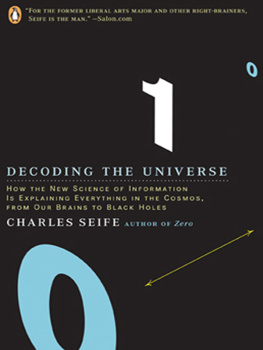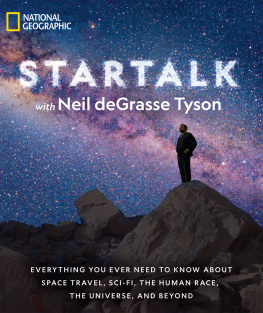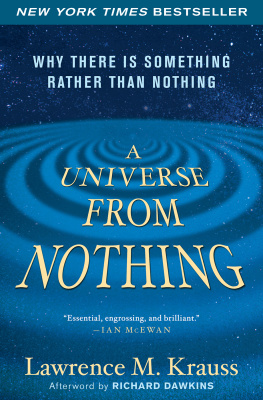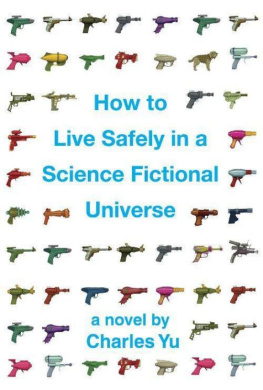Charles Liu - 30-Second Universe
Here you can read online Charles Liu - 30-Second Universe full text of the book (entire story) in english for free. Download pdf and epub, get meaning, cover and reviews about this ebook. year: 2019, publisher: Ivy Press, genre: Children. Description of the work, (preface) as well as reviews are available. Best literature library LitArk.com created for fans of good reading and offers a wide selection of genres:
Romance novel
Science fiction
Adventure
Detective
Science
History
Home and family
Prose
Art
Politics
Computer
Non-fiction
Religion
Business
Children
Humor
Choose a favorite category and find really read worthwhile books. Enjoy immersion in the world of imagination, feel the emotions of the characters or learn something new for yourself, make an fascinating discovery.

- Book:30-Second Universe
- Author:
- Publisher:Ivy Press
- Genre:
- Year:2019
- Rating:3 / 5
- Favourites:Add to favourites
- Your mark:
- 60
- 1
- 2
- 3
- 4
- 5
30-Second Universe: summary, description and annotation
We offer to read an annotation, description, summary or preface (depends on what the author of the book "30-Second Universe" wrote himself). If you haven't found the necessary information about the book — write in the comments, we will try to find it.
Charles Liu: author's other books
Who wrote 30-Second Universe? Find out the surname, the name of the author of the book and a list of all author's works by series.
30-Second Universe — read online for free the complete book (whole text) full work
Below is the text of the book, divided by pages. System saving the place of the last page read, allows you to conveniently read the book "30-Second Universe" online for free, without having to search again every time where you left off. Put a bookmark, and you can go to the page where you finished reading at any time.
Font size:
Interval:
Bookmark:


UNIVERSE
50 most significant ideas, theories and events that sum up everything
Charles Liu
Karen Masters
Sevil Salur
Illustrations
Steve Rawlings

Charles Liu
Universe. Most of us connect that word with the heavens above the planets, stars, nebulae and galaxies that we gaze upon with wonder in the darkness of the night. We are absolutely justified in doing so, for the story of humanity is inextricably linked with our collective realization, gradually over the millennia, that our species occupies only a tiny volume within a vast and possibly limitless expanse of space that extends far beyond our worlds firm earth and flowing water.
Awesome and amazing as all that out there may be, however, that vision of the cosmos is incomplete. The universe comprises all of space, time, matter and energy in existence. It includes everything that has emerged from the interaction of all its constituents including all that is physical, chemical, biological, psychological, intellectual and societal. The universe would not be whole without every particle, every wave, every creature and every idea that has ever appeared or ever will appear, whether it has vanished or persisted, whether we perceive it or not, and whether it affects us or not.
Only by contemplating all of this staggering content and complexity can we even begin to grasp the enormity that is the universe. And through that contemplation, we realize that the greatest, deepest and profoundest questions we ask are reserved for the universe itself. How did it all begin? How has everything become what it is today? What is out there, beyond our ken, and how much? What are the smallest and most basic building blocks of everything? Will the universe go on forever? What exists beyond the limits of infinity? And, perhaps most self-servingly and most frustratingly, why are we here?

Piece by painstaking piece, over hundreds of generations we humans have been trying to put together the vast and nearly unknowable cosmic puzzle and, remarkably, we have been making real progress. As Albert Einstein famously observed, The most incomprehensible thing about the Universe is that it is at all comprehensible. Today, we know how long ago our universe started to exist 13.8 billion years ago, when time began. We know what the universe was like at that time, and how it reflects the microscopic underpinnings of all matter and energy today. We know how planets spin, how stars shine, and how galaxies can crash and combine even as space itself expands ever faster, spreading matter ever more thinly throughout the cosmos.
Our insights about the universe have often been gained with amazing machines built for discovery: the Hubble Space Telescope for finding dark matter and dark energy; the Large Hadron Collider for revealing the Higgs particle and quark-gluon plasma; and LIGO for detecting the gravitational waves released by colliding black holes rippling through the fabric of space-time. Building on these and other scientific results, we have furthered theories that, despite their solid scientific foundation, sometimes feel almost unrealistically fantastical: the Big Bang, cosmic inflation, string theory, supersymmetry and even a multiverse where our universe is just one among possibly infinitely many others.
Alas, deciphering the cosmos can be an achingly slow process and humanity is not a particularly patient lot. So even when the data have not been available, we have, throughout history, reached beyond the tangible with our minds alone. This, too, is part of the universe the realm of metaphysics, where we wonder what lies beyond even the most distant cosmic horizons. What, if anything, supersedes all there is? Does thought, consciousness or even existence have any larger meaning? Can we really know everything or, for that matter, anything at all?
This book sets forth a seven-step path along humanitys quest of cosmic enquiry. Beginning with the Origins of the Universe, we travel from the very first moment of existence to the time when stars and galaxies illuminate the vastness of space. We next examine the properties of our curving, ageing and expanding Observable Universe, then peer into the Quantum Universe of submicroscopic particles and strangely predictable uncertainty that govern the cosmos at its most fundamental levels. We zoom out again to view the stars, galaxies and other cosmic objects that populate the Physical Universe; and mindful of that grand perspective, we contemplate what may extend beyond it all, into the Metaphysical Universe. We face the Fate of the Universe as our lives, our world and all the nestled pieces of the cosmos refuse to go gently into that good night; and, finally, we look beyond all there is to the Multiverse that just might be and perhaps glimpse the edges of an unbounded reality where there will never be the dying of the light.


GLOSSARY
angular size A term that refers to how large an object appears to be in your field of view. The closer an object the larger it appears to be: if a coin a metre from your eye has an angular size of about 1 degree; at 0.5 metre it is 2 degrees; at 2.5 centimetres away, it is about 40 degrees.
black body In physics, an object that is emitting light because it is glowing hot. Black bodies emit a characteristic spectrum of light with the peak moving to shorter wavelengths as they get hotter. Most people are familiar with the idea of lumps of metal glowing red hot or white hot: this glow is the black body radiation from the heated metal, and the white (or blue) light has shorter wavelength than the red.
cosmic horizon The distance from which light has had time to travel to us since the beginning of the universe. Any part of the universe more distant is not possible for us to have observational knowledge of.
cosmological constant See dark energy.
cosmic rays High-energy particles moving through the solar system that hit Earths upper atmosphere and produce showers of other particles, which can be detected.
dark energy A mysterious energy source in the universe, with negative pressure, that can speed up cosmic expansion. No one knows what it is but all constraints suggest it is constant with time and space (the cosmological constant).
fusion/fission The processes by which atomic nuclei either join together (fusion) or break apart (fission), regulated by the strong force. Atomic nuclei up to about the mass of iron release energy by fusion. Those more massive than iron release energy by fission.
Font size:
Interval:
Bookmark:
Similar books «30-Second Universe»
Look at similar books to 30-Second Universe. We have selected literature similar in name and meaning in the hope of providing readers with more options to find new, interesting, not yet read works.
Discussion, reviews of the book 30-Second Universe and just readers' own opinions. Leave your comments, write what you think about the work, its meaning or the main characters. Specify what exactly you liked and what you didn't like, and why you think so.











